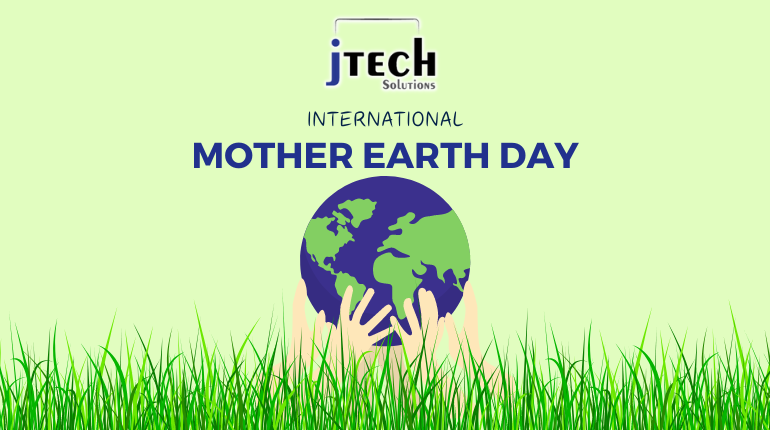Harnessing Technology for Earth Day's Mission
- Home
- Harnessing Technology for Earth Day's Mission

Earth Day, celebrated annually on April 22nd, serves as a global reminder of the urgent need for environmental conservation and sustainability . In recent decades, one of the most pressing environmental challenges has been plastic pollution, which threatens terrestrial and aquatic ecosystems alike. However, amid this crisis, technological innovations have emerged as powerful tools in the fight against plastic pollution, offering hope for a more sustainable future .
The Problem of Plastic Pollution:
Around 350 million tons of plastic are being produced every year. It has become an integral part of modern life, but its convenience comes at a significant cost to the environment. From single-use plastics clogging waterways to microplastics infiltrating food chains, the repercussions of plastic pollution are widespread and profound. Recognizing the urgency of the situation, individuals, communities, and industries are increasingly seeking solutions to mitigate the environmental impact of plastic waste.
Fortunately, scientists, engineers, and innovators worldwide are harnessing technology to combat plastic pollution on multiple fronts. Here are some notable technological innovations leading the charge:
Traditional recycling methods often struggle to effectively process certain types of plastics, leading to limited recycling rates and significant waste. Advanced recycling technologies, such as chemical recycling and pyrolysis, offer solutions by breaking down plastics into their molecular components, allowing for more efficient and versatile recycling. These technologies enable the conversion of plastic waste into valuable raw materials for manufacturing, reducing the reliance on virgin plastics and mitigating environmental harm.
Biodegradable and Compostable Plastics:
Biodegradable and compostable plastics represent a promising alternative to conventional plastics, as they break down naturally into harmless byproducts under suitable conditions. Innovations in biopolymer production have led to the development of plastics derived from renewable sources, such as plant-based materials, that offer comparable performance to traditional plastics while being biodegradable and compostable. These eco-friendly alternatives reduce the accumulation of persistent plastic waste in the environment, offering a sustainable solution to the plastic pollution problem.
Ocean Cleanup Technologies:
The accumulation of plastic debris in oceans poses a significant challenge for marine ecosystems and coastal communities. Ocean cleanup technologies, ranging from floating barriers to autonomous drones, are being deployed to remove plastic waste from water bodies efficiently. These technologies employ innovative designs and materials to capture and collect floating plastics, preventing them from further contaminating marine environments. Additionally, remote sensing and data analytics are used to identify plastic hotspots and optimize cleanup efforts for maximum impact.
As we mark earthday and renew our commitment to environmental stewardship, environmental technology emerges as a potent ally in the fight against plastic pollution. It is evident that technological innovations hold immense potential in the fight against plastic pollution. Social media campaigns to technological innovations are instrumental in raising awareness of the need to reduce plastic production and replace it with sustainable alternatives. However, addressing plastic pollution requires collective action and collaboration across sectors to implement these technologies effectively and drive systemic change towards a more sustainable future for generations to come. By harnessing the power of technology to educate, inspire, and mobilize individuals and communities, we can catalyze meaningful change and create a healthier, more sustainable future for our planet.